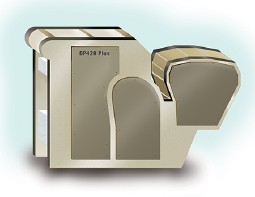More Print Tips
- • Maximum Impact: Is it Best to Send a Postcard or a Letter?
- • Drive Rapid Response to Your Direct Mail: 10 Pro Tips
- • The Usefulness and Utility of Print Marketing
- • Boost Sales with Brochures
- • 5 Opacity Tips You Should Know
- • The Window to Marketing
- • Profitable Postcard Marketing: Finding the Right Frequency
- • 3 Fundamentals for Nailing Your Direct Mail Marketing
- • Picking the Perfect Paper
Perfect Your Proofing
It may seem like there is never time to proof something thoroughly the first time, but when it is not done, you may end up making time to do the entire job a second time. Just what are some of the things that should be checked during the proofing process? Here is a list to perfect your proofing strategy:

Proof the text.
The first place to start is the text. Review all text for spelling and grammatical correctness, check punctuation, and most importantly, accuracy of content. Making changes to text later in the production process will only slow things down, so make sure that everything is perfect before moving on to the next step.
Proof the images.
Viewing the images on your computer is a great place to start, as long as your screen is calibrated properly, but keep in mind that the colors on-screen will not be a perfect match to the colors that are printed. Be sure to check the size and resolution of the image. For high-level image quality jobs, it may be wise to have a physical proof rather than just an on-screen proof of the images done on professional proofing equipment so you can get a better idea of the true color of the piece.
Proof the pages.
Checking an entire page of an original can be done on screen, but it is also a good idea to print out the pages. Look over the typography, placement of images, illustrations and text, as well as hyphenation and line arrangement, page format, and bleeds.
The difference between a thorough proof and no proof at all is the time you may spend having to redo a job. Taking the time at the beginning will save you time and money in the long run.


A Guide to Graphic Print Production
by Kaj Johansson, Peter Lundberg, Robert Ryberg
An introductory textbook covering all aspects of print production and manufacturing. The printed page is still the most common product of graphic design work, making it essential that designers and illustrators understand the production and printing process. And as more and more print material is finding a dual-use in electronic formats (Web, ebooks, motion-graphics using Flash, etc.), it has become even more important that designers understand the impact their design decisions have on the feasibility of re-purposing their work for various media.



Share this